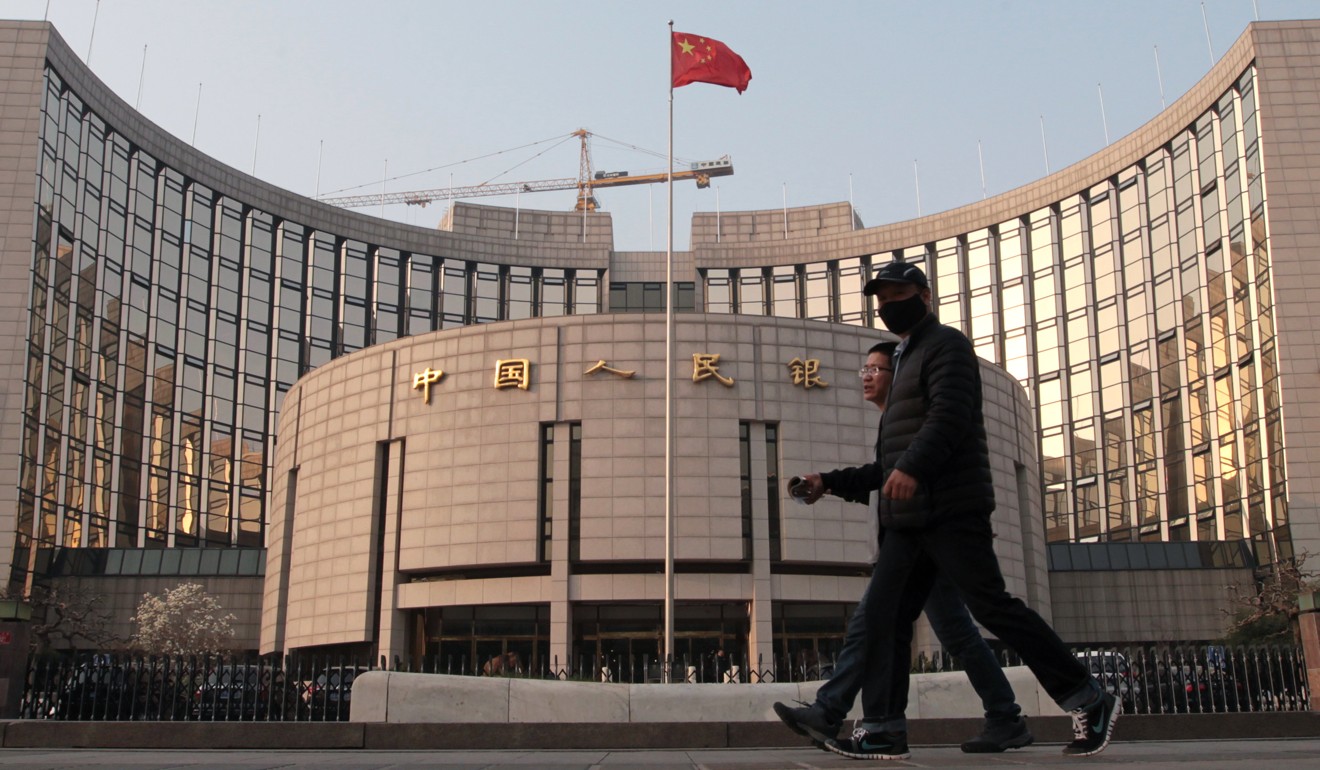
China makes ‘US$102 billion’ move to aid slowing economy, but will it be effective?
- The People’s Bank of China has changed the definition of a small business to encourage banks to increase lending amid the trade war with the United States
- Estimates of amount of liquidity the targeted reserve-requirement ratio cut will release range from 400 billion yuan to 700 billion yuan
The effectiveness of a move by China’s central bank to inject up to an expected 700 billion yuan into the world’s second largest but worryingly slowing economy is difficult to calculate given the lack of transparency in the monetary policy, warned a chief economist.
The People’s Bank of China (PBOC) has changed the definition of a small business, meaning an enterprise with a credit line of less than 10 million yuan (US$1.46 million) will qualify for targeted reserve-requirement ratio cuts, up from the previous standard of 5 million yuan.
This will allow banks to lend more capital to enterprises now classed as small businesses, and therefore free up more reserves from the central bank.
But with the news, released on Wednesday evening, failing to specify an exact figure, the fact that estimations range from 400 billion yuan (US$58.27 billion) to as much as 700 billion yuan (US$101.97 billion) is seen to reduce the transparency of the policy, making it hard to calculate the exact effectiveness.
Liao Zhiming, an analyst at Tianfeng Securities, wrote that the move could unleash as much as 700 billion yuan of funds, while analysts at China International Capital Corporation expected the change to release only 400 billion yuan of liquidity.

“It is difficult to clearly understand the overall policy effect as every institution has to make their own calculations,” said Ding Shuang, chief Greater China economist at Standard Chartered Bank.
“The central bank wants to relax the monetary policy on one hand, but it doesn’t want to cause an expectation of strong monetary easing on the other.”
The twisted and conditional liquidity support is part of the central bank’s controversial plan to implement “targeted easing” which is aimed at ensuring funds will end up in hands of the right borrowers such as small factory owners.
If a bank can prove it has followed instructions from the central bank, including lending more to small businesses, it will be allowed to place smaller reserves at the PBOC so that it will then have more funds to lend.
By allowing banks to place a smaller reserve at the PBOC, the central bank has shelved “general” monetary policy tools including benchmark interest rate cuts and broad-based adjustment in the required reserve ratio – the minimum percentage of deposits a bank is required to have with the PBOC.
However, this style of monetary easing is also seen as controversial as it is an issue of debate whether monetary policy can serve the function of helping specific sectors or groups.
PBOC’s targeted liquidity support to certain institutions for special purpose use – such as providing long-term cheap funds to the China Development Bank to finance subsidised housing – has edged towards bankrolling projects favoured by the government.
The Chinese economy is losing steam quickly amid the trade war with the United States, with a private gauge of manufacturing activities released earlier on Wednesday dipping into contraction for the first time in 19 months, pointing to a gloomy picture ahead.
China’s leadership has emphasised the need to “stabilise” growth and employment in 2019, and the central bank is a key institution to achieve this.
Ding from Standard Chartered Bank, who previously worked for the International Monetary Fund, said such “targeted” tweaks may become the new standard for PBOC in 2019 under a “prudent” monetary policy stance.
At the same time, the central bank’s move is still seen a good news for lenders and the broad economy as liquidity is tightening before the Lunar New Year holiday.
It was the first policy move after the State Council, the country’s cabinet, said last month that China would improve its policies on targeted reserve ratio cuts to better support the private sector as well as small businesses.
The central bank said it believes the latest move could “guide” banks to lend more to small and tiny businesses.

